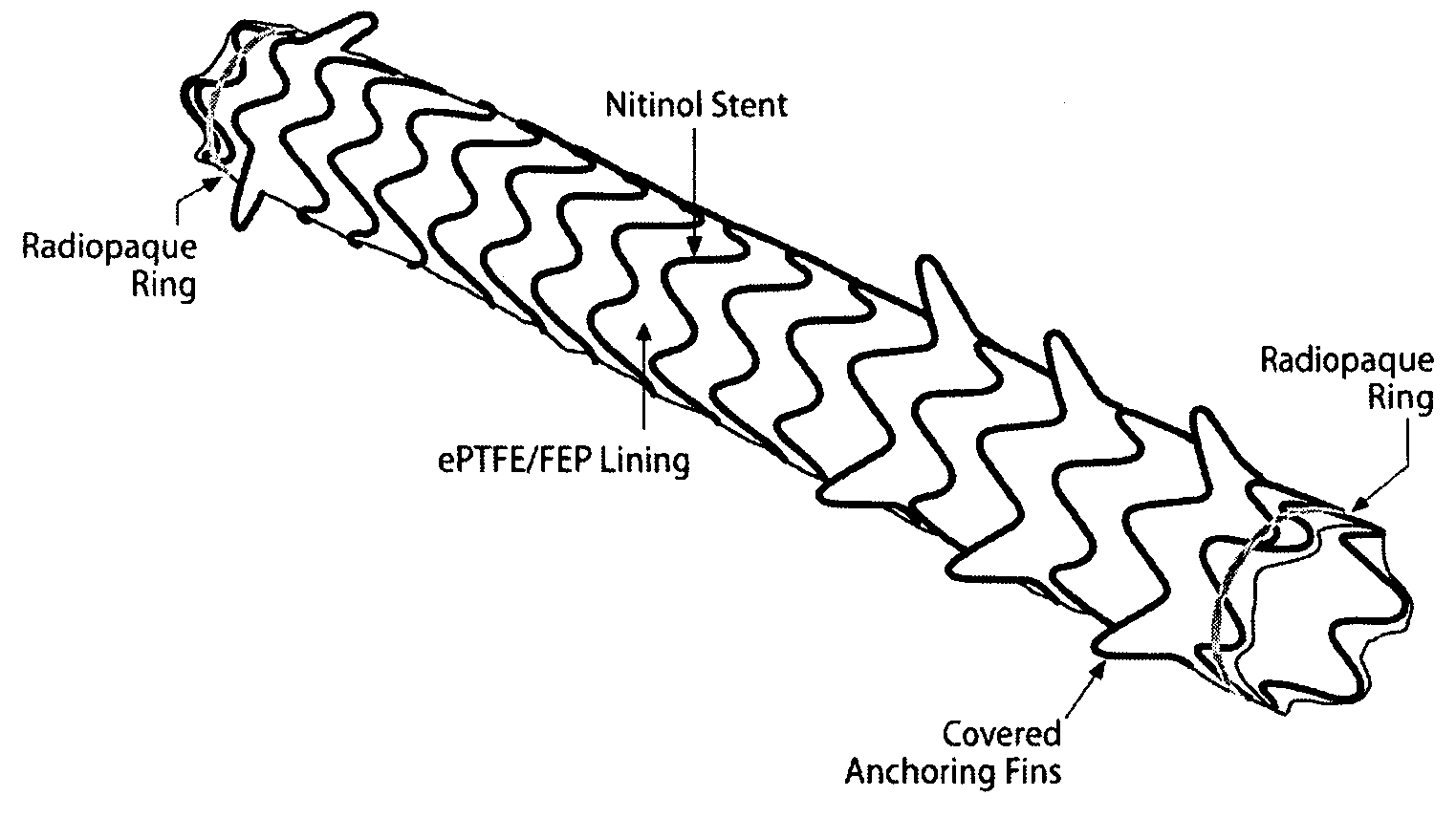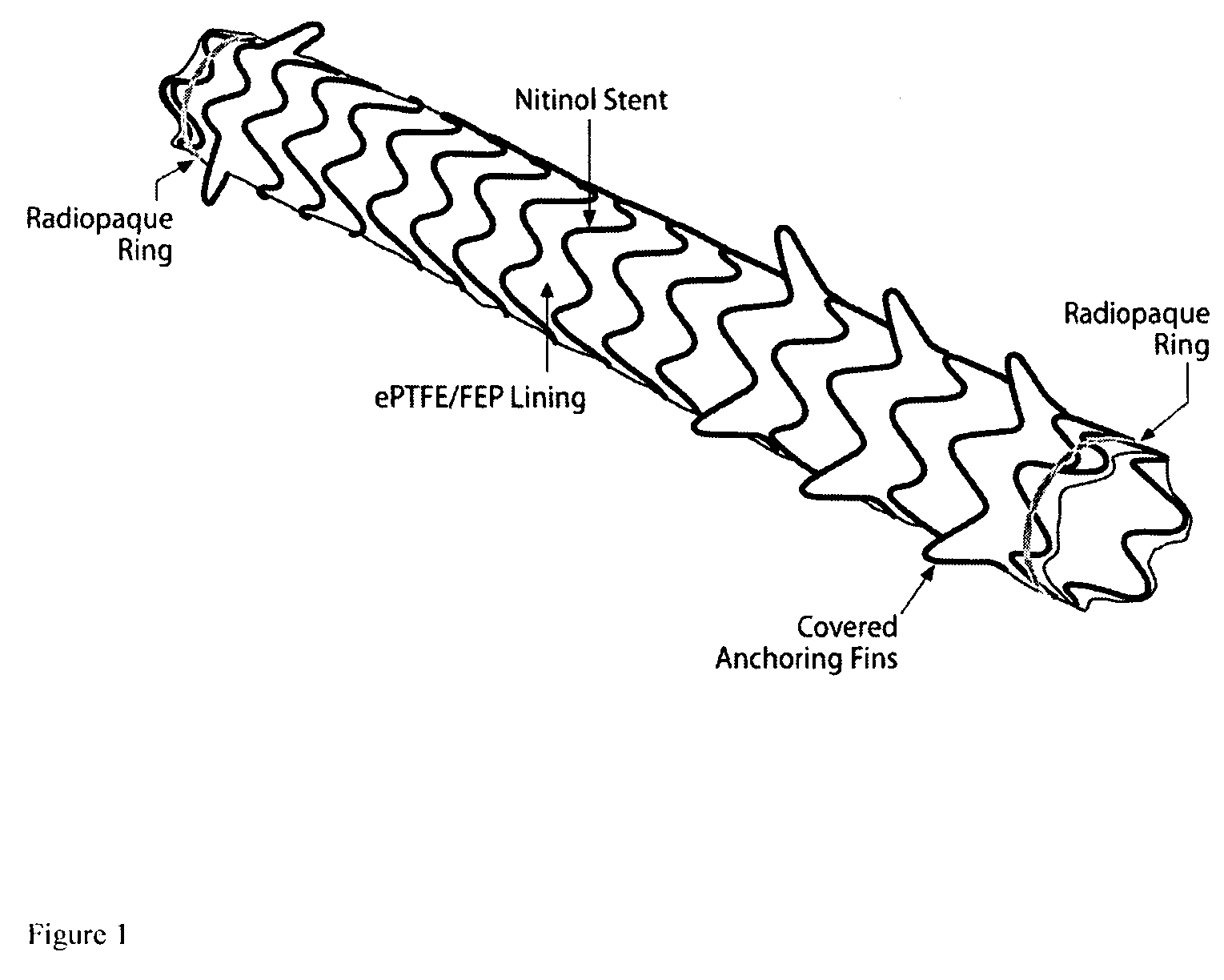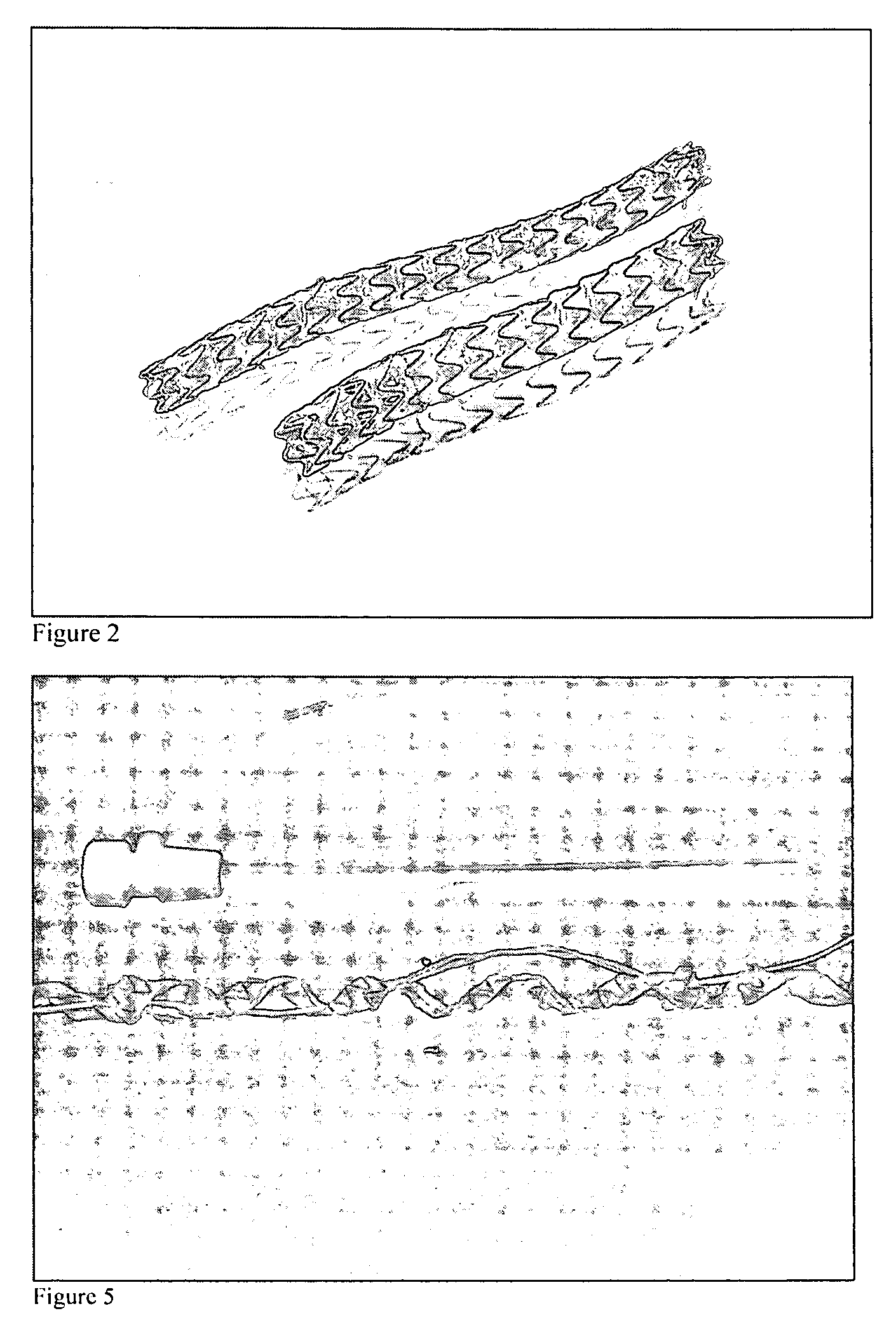Removeable stents
a biliary system and metallic stent technology, applied in the field of thin wall intraluminal grafts, can solve the problems of inability to remove, poor long-term performance of metallic stents in the biliary system, limiting their widespread application in the treatment of benign biliary diseases, and inability to be removed, and still represent very real problems
- Summary
- Abstract
- Description
- Claims
- Application Information
AI Technical Summary
Problems solved by technology
Method used
Image
Examples
example 1
[0092] Patients:
[0093] Between December 2004 and October 2005 a 6 patients had Viabil Biliary Endoprostheses placed and retrieved (W. L. Gore Associates, Flagstaff, Ariz.). With respect to the patients described here, three patients had focal anastamotic strictures associated with previous orthotopic liver transplantation. One patient had a chronic recalcitrant focal stenosis of the distal left hepatic duct of uncertain etiology. One patient had a mucinous tumor of her biliary system. The final patient had unresectable metastatic adenocarcinoma involving both the right and left hepatic ducts extending into the proximal common hepatic duct. All patients initially presented with clinical findings consistent with biliary obstruction and infection and were subsequently decompressed with percutaneous biliary drainage and treated with antibiotics.
[0094] At the time of stent graft placement, all patients had internal / external biliary drains in place. Of the 3 patients with transplant-rel...
example ii
[0110] Removal of Stent Grafts From the Vasculature
[0111] Two patients with end-stage renal disease with an arterial-venous graft had covered stents placed because of a recurrent, recalcitrant stenoses that demonstrated repeated restenosis and high elastic recoil despite repeated balloon angioplasty near the venous outflow. In both patients, the stent grafts used was a Viabahn stent graft from W L Gore which was placed in order to serve as a vascular conduit across the recalcitrant stenoses and to also serve as a scaffold for the vessel to remodel around. The first patient subsequently returned for extraction of the implanted stent graft. Using a similar technique as described and detailed above the stent graft was removed approximately 3 weeks later after initial stent graft placement. Namely, in this patient bidirectional vascular access was obtained surrounding the stent graft (a 10 French sheath was placed distal to the proximal margin of the stent graft directed towards the in...
PUM
 Login to View More
Login to View More Abstract
Description
Claims
Application Information
 Login to View More
Login to View More - R&D
- Intellectual Property
- Life Sciences
- Materials
- Tech Scout
- Unparalleled Data Quality
- Higher Quality Content
- 60% Fewer Hallucinations
Browse by: Latest US Patents, China's latest patents, Technical Efficacy Thesaurus, Application Domain, Technology Topic, Popular Technical Reports.
© 2025 PatSnap. All rights reserved.Legal|Privacy policy|Modern Slavery Act Transparency Statement|Sitemap|About US| Contact US: help@patsnap.com



